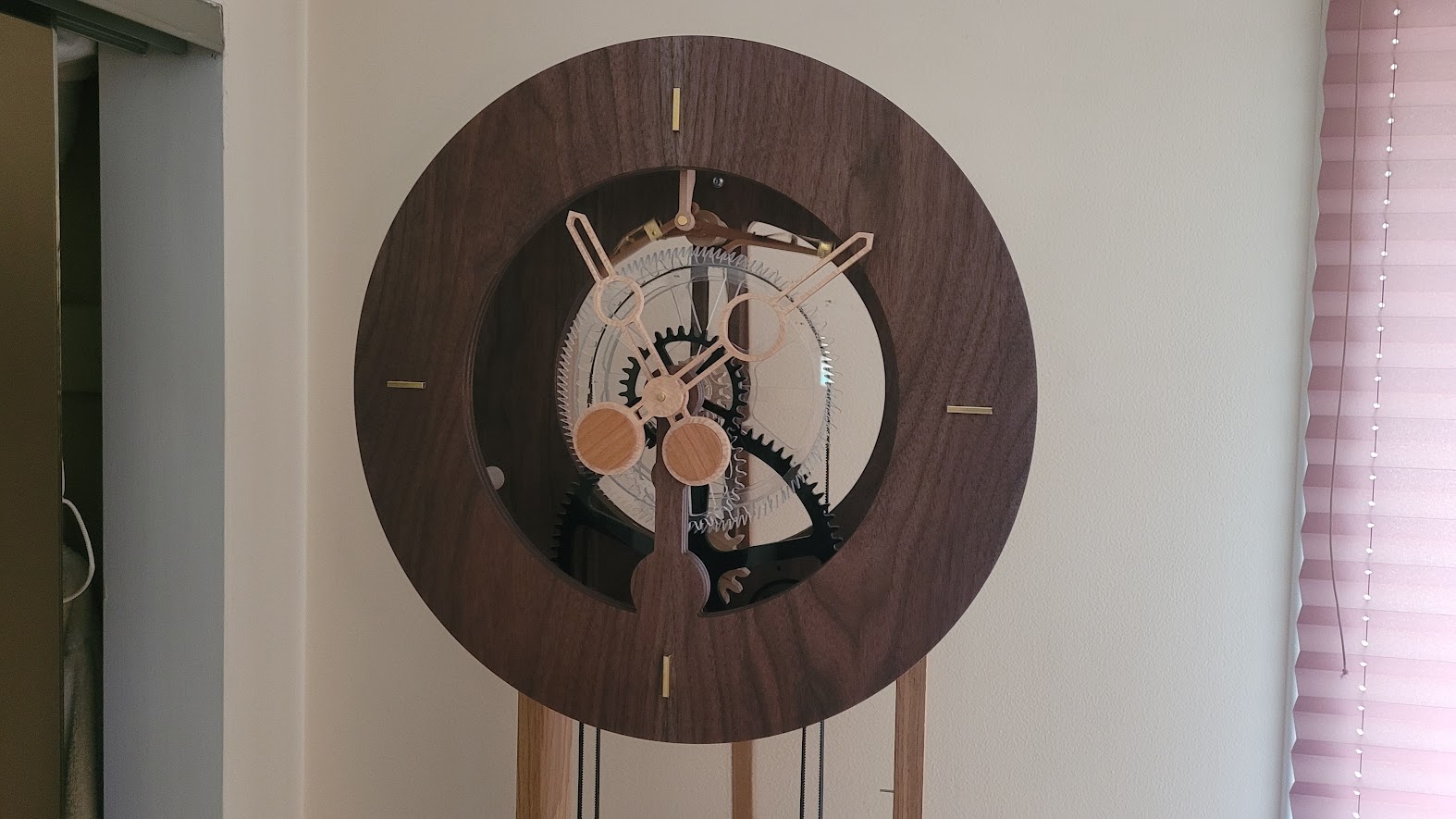Recently, I posted about a test clock I was working on utilizing a grasshopper escapement, first developed by John Harrison the famous English clockmaker from about 300 years ago. Harrison developed the grasshopper escapement to eliminate sliding friction, the enemy of accurate time keeping. A side benefit is that it is nearly silent. That was the appeal to me because my wife hates tick-tock, so in order to have a functioning clock that she will tolerate I needed to make one that is very quiet.
I built a mockup of just the escapement mechanism with a pendulum to prove to myself I could fabricate one that worked. From that small success I built two test clocks, one just to prove I could design my own drive train from scratch, and a second to make the whole thing attractive. I didn't keep track of how many hours I spent designing and building the test clocks and the final one, but I'd guess it approached 300 hours. That, by far, is the longest I've ever spent on one project.
Along the way I implemented a "remontoire", an endless rope, to automatically rewind the clock. There is a small motor in the back of the clock that is triggered by the falling drive weight when it trips a limit switch to start the motor and another to turn it off. I couldn't stop a rope system from slipping, so I used a toothed belt like used in ink jet printers. Some fancy machining was required to mill the tiny 1 mm teeth into the center wheel for the belt to mesh with.
All of the wheels, pinions, and most of the clock parts were machined on my CNC. The frame was built in the conventional way, but I used the CNC to mill pockets into it for the limit switches and to house the relay and wiring in the base.
The clock is made with walnut plywood that I made from shop sawn veneer. The base is white oak. The hands are sycamore and cherry, as is the grasshopper. The wheels are cast acrylic and the pinons are cherry plywood. The pendulum weighs 3 pounds, as Harrison deemed correct. The drive weight is about 2 lbs and the counter weight is about 300 grams. While much of clock making can be derived from formulae and geometry, the weight required to drive a clock can only be ascertained empirically, although I did find that once you know what works for one movement it can be extrapolated to others to get you into the ballpark.
Here are a few photos.

Here's a video of about 75 seconds showing the clock in motion:
https://photos.app.goo.gl/hk4kGXYVx8mV8C6s9
This was a very rewarding project, but I think it satisfied my clock making appetite for awhile.
John




 Reply With Quote
Reply With Quote

